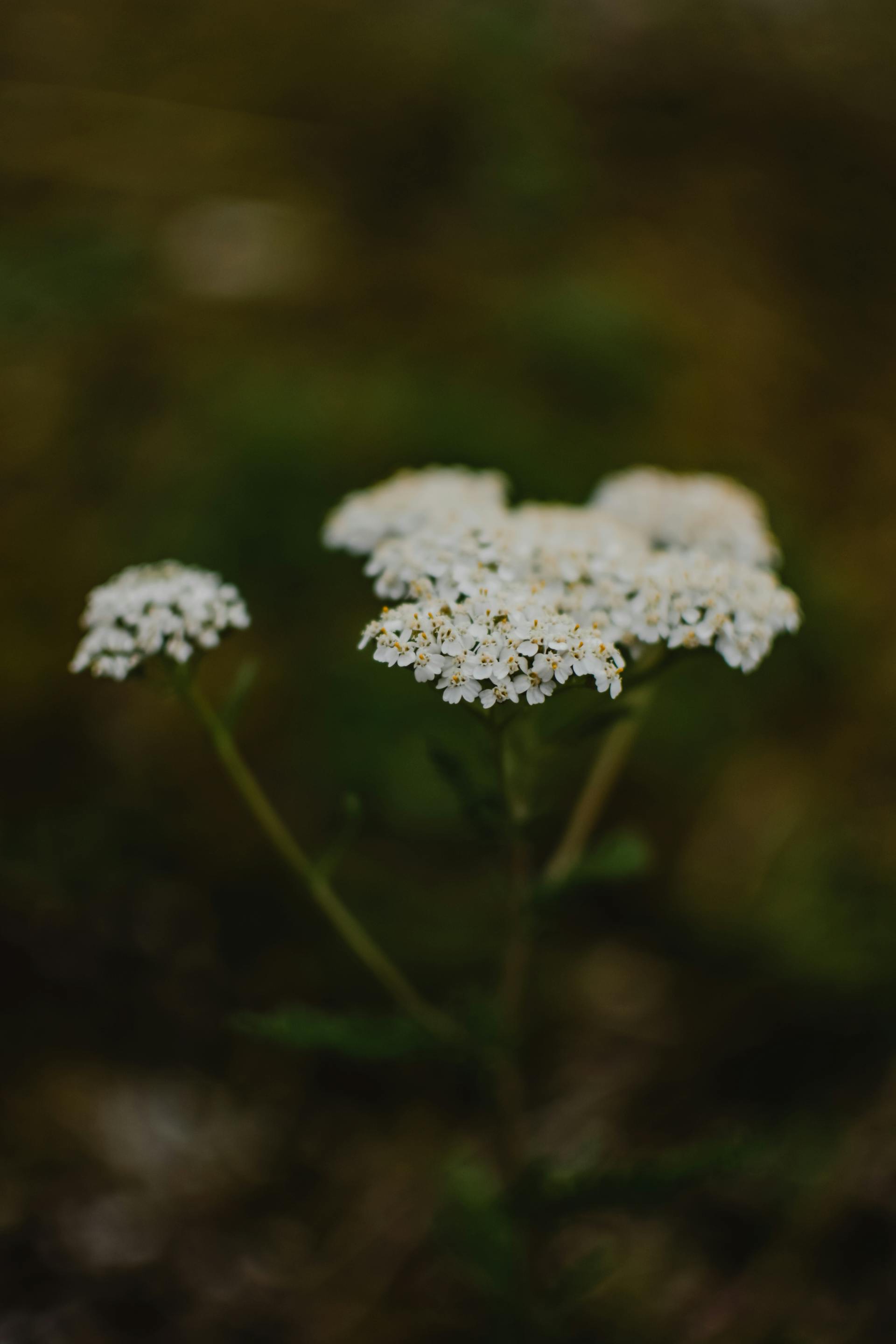Botanical Basics
- Common Name(s): Yarrow
- Folk Name(s): Soldier’s Woundwort, Knight’s Milfoil, Carpenter’s Weed, Nosebleed Plant, Thousand-leaf, Arrowroot, Devil’s Nettle
- Scientific/Latin Name: Achillea millefolium
- Family: Asteraceae (Daisy family)
- Plant Type: Herbaceous perennial
- Botanical Description: Upright stems 1–3 ft tall, with feathery, fernlike leaves that are finely divided (“millefolium” = thousand leaves). Flat-topped clusters of small white, pink, or yellow composite flowers bloom summer to early fall. Aromatic, bitter herb with creeping rhizomes.
- Growing Zones/Climate: USDA Zones 3–9
- Best Zones for Growth: Temperate regions; highly adaptable, drought-tolerant once established
- Habitat & Range: Native to Europe and Asia; naturalized in North America and many temperate regions worldwide; grows in meadows, grasslands, roadsides, and disturbed soils
Cultivation & Harvest
- Soil & Sun Requirements: Prefers well-drained soil; tolerates poor, sandy, or rocky soils; thrives in full sun but tolerates light shade
- Propagation: By seed, division of roots, or cuttings; self-seeds easily
- Companion Planting: Attracts beneficial insects (ladybugs, predatory wasps); companion for herbs and vegetables as a pollinator draw and pest deterrent
- Harvesting Guidelines: Leaves and flowers gathered at peak bloom in summer; roots sometimes used in autumn
- Drying/Preservation: Air-dry leaves and flowers in shade; store airtight for teas, tinctures, and magical use
Traditional & Historical Use
- Cultural Significance: Named after Achilles, who used yarrow to treat soldiers’ wounds in Greek legend. Used in battlefield medicine for centuries. Also a divination tool in the I Ching (yarrow stalk method).
- Traditional Medicine: Used as a wound healer, styptic (to stop bleeding), digestive bitter, fever reducer, and women’s herb (to regulate menstruation).
- Symbolism: Represents healing, protection, divination, and courage.
Medicinal & Practical Properties
- Active Constituents: Volatile oils (chamazulene, cineole), flavonoids, sesquiterpene lactones, tannins, alkaloids (achilleine), bitters
- Medicinal Uses:
- Wound healing and blood clotting
- Reduces fever and colds (diaphoretic)
- Digestive aid for bloating, indigestion
- Menstrual regulator and cramp reliever
- Anti-inflammatory and antimicrobial
- Preparation Methods: Infusions (tea), tinctures, poultices, compresses, essential oil, herbal baths
- Dosage & Guidelines:
- Tea: 1–2 tsp dried herb per cup, 2–3 times daily
- Tincture: 2–4 mL up to 3 times daily
- Poultice/compress: Fresh leaves crushed and applied to wounds
- Safety/Precautions: May cause allergic reactions in those sensitive to Asteraceae family. Avoid use during pregnancy (uterine stimulant). Essential oil is potent and should be diluted.
Magical & Spiritual Properties
- Elemental Association: Air (also sometimes Water in healing and dream magic)
- Planetary/Deity Correspondence: Venus (love and protection), linked to Aphrodite, Achilles, and Northern European healing deities
- Magical Correspondences: Protection, healing, love, courage, divination, psychic development
- Ritual Use: Hung in homes for protection; added to sachets and charms for courage and love; brewed for divinatory dreams; yarrow stalks traditionally used for casting the I Ching
- Symbolism in Divination/Dreams: Suggests healing, courage, or clarity in decision-making; may point to hidden truths being revealed
Ecological & Culinary Uses
- Pollinator Value: Excellent nectar and pollen source for bees, butterflies, and beneficial insects
- Wildlife Uses: Provides habitat for predatory insects that protect nearby crops; foliage grazed by deer in the wild
- Culinary Uses: Leaves and flowers used sparingly in salads, soups, or as a bitter flavoring; occasionally brewed into herbal beers and liqueurs
Household/Practical Uses
- Quick Uses: Styptic for wounds, protective charm herb, insect repellent (burned or infused in oil), fever tea
- Notable Traits: Legendary “soldier’s herb” for wounds; one of the oldest known healing herbs in Europe and Asia
- Special Notes: A true multi-purpose herb bridging medicine, magic, and divination — from battlefield poultices to sacred oracles

Supporting Notes
- Grieve, M. A Modern Herbal (1931)
- Chevallier, Andrew. Encyclopedia of Herbal Medicine (2016)
- Rätsch, Christian. Encyclopedia of Herbs and Spices (2005)
- Duke, James A. Handbook of Medicinal Herbs (2002)
- Foster, Steven & Duke, James. Peterson Field Guide to Medicinal Plants and Herbs
No comments:
Post a Comment